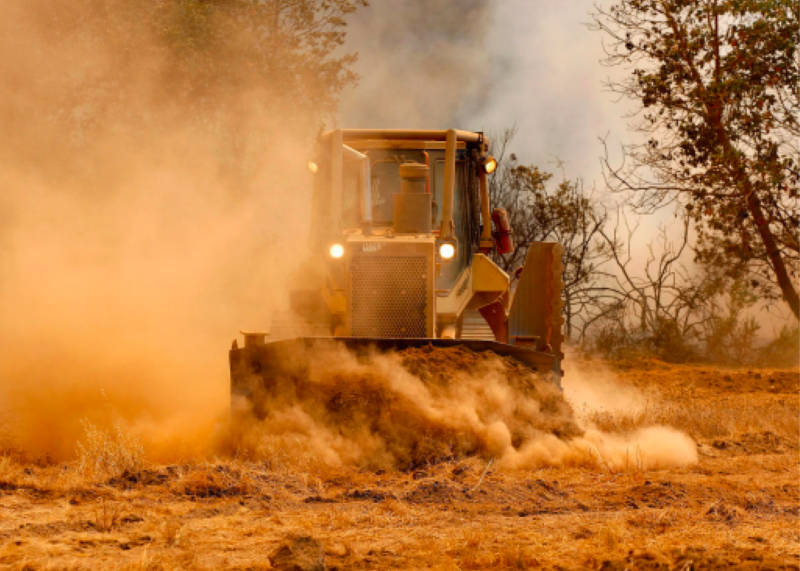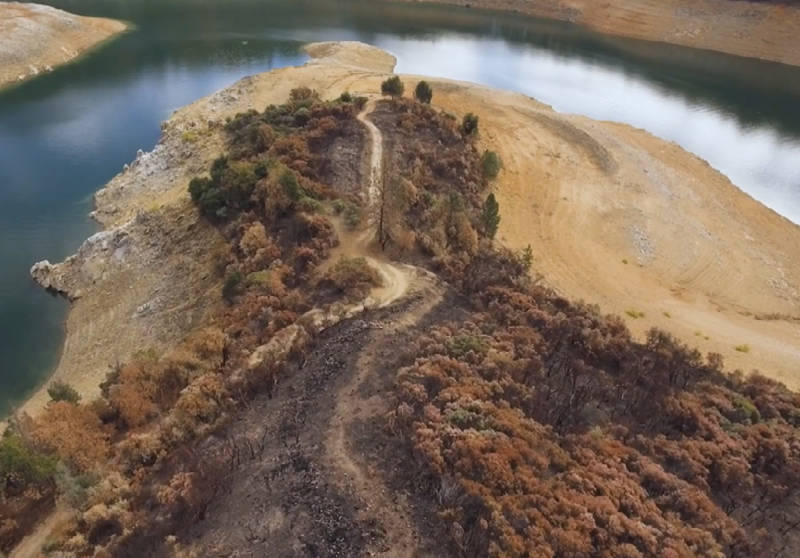A new report by a firefighting group contends that the fire lines created by bulldozers have become increasingly ineffective in stopping the spread of wildfires.
The report focused on the 2018 Carr Fire in Redding, which killed eight people, including three firefighters and a bulldozer operator. Another driver suffered severe injuries.
The dozer lines used in the firefighting effort were supposed to contain the massive wildfire. But the report by firefighter advocacy group Firefighters United for Safety, Ethics and Ecology (FUSEE) found that most of these lines didn’t do the job.
Dozer lines are cleared areas bulldozed around the perimeter of wildfires. They're designed to create firebreaks and help contain wildland blazes.
The report said that strong winds pushed flames beyond the threshold, or lines were carved into the wrong areas. It added that these lines are sometimes not only ineffective but also dangerous, and that bulldozer operators often risk their lives in futile attempts to stop wildfires.

